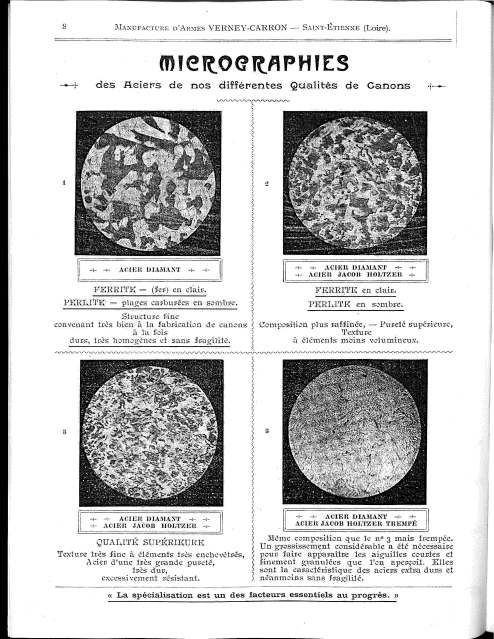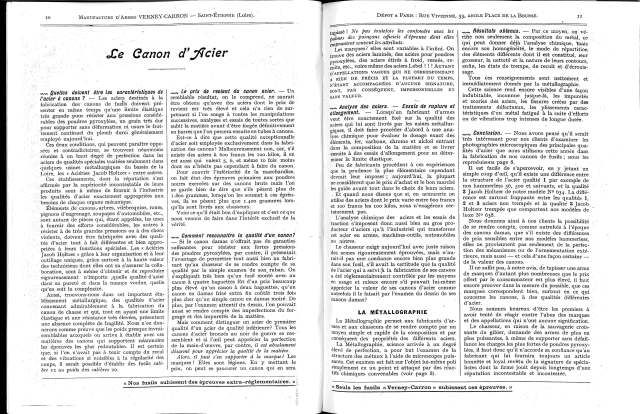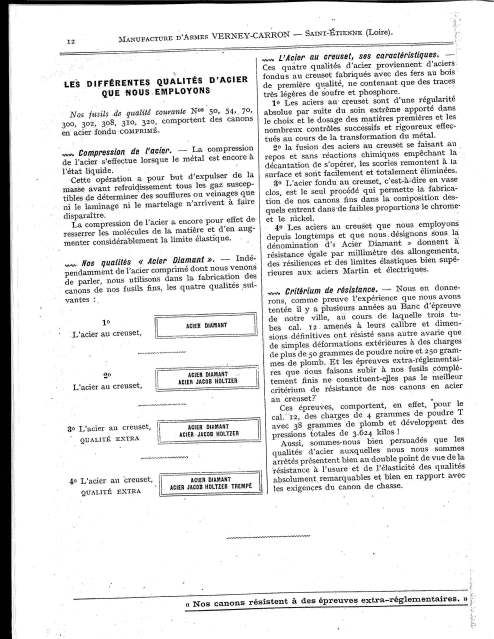|
S |
M |
T |
W |
T |
F |
S |
|
|
1
|
2
|
3
|
4
|
5
|
6
|
|
7
|
8
|
9
|
10
|
11
|
12
|
13
|
|
14
|
15
|
16
|
17
|
18
|
19
|
20
|
|
21
|
22
|
23
|
24
|
25
|
26
|
27
|
|
28
|
29
|
30
|
31
|
|
|
|
|
|
3 members (SKB, David Williamson, 1 invisible),
893
guests, and
6
robots. |
|
Key:
Admin,
Global Mod,
Mod
|
|
|
Forums10
Topics39,709
Posts564,482
Members14,611
| |
Most Online9,918
Jul 28th, 2025
|
|
|
|
Joined: Mar 2005
Posts: 709
Sidelock
|
OP

Sidelock
Joined: Mar 2005
Posts: 709 |
Hopefully we will learn more.
|
|
|
|
|
Joined: May 2011
Posts: 766 Likes: 2
Sidelock
|

Sidelock
Joined: May 2011
Posts: 766 Likes: 2 |
Several I have seen were deeply pitted, as well...perhaps the metalurgy? Steve
|
|
|
|
|
Joined: Nov 2006
Posts: 534
Sidelock
|

Sidelock
Joined: Nov 2006
Posts: 534 |
Two factors there.
Most French SxS users pre war are of the "farmer" type that used the gun often, and probably did not clean much.
The common European rabbit "Oryctolagus cuniculus" was a pest until the 60s, and was a very common and ubiquitous target. Not to mention that it is very good eating. A common foe of the French farmer that was shot at at all times.
Added to that was WWII in which lots of shotguns were buried to avoid Nazi confiscation.
Some did well, the vast majority did not. Of course the outside would be damaged too in those cases.
I believe that a lot of the French shotgun found here came through Germany and were liberated by GIs in 1945.
I don't know if there was anything nefarious in "Poudre T" or the primers used.
Best regards,
WC-
|
|
|
|
|
Joined: Jan 2002
Posts: 11,574 Likes: 167
Sidelock
|

Sidelock
Joined: Jan 2002
Posts: 11,574 Likes: 167 |
The two most common issues I've seen with French guns are pitted bores and heavy triggers. Not that you won't find French guns with good bores and very nice triggers, but having looked at a bunch of them over the last 35+ years, I'd say both of those are more common with French guns than with doubles from any other country that produced a significant volume of guns. On the other hand, it's very unusual to find a French gun that isn't well-made. Certainly more common to find "crappers" from Belgium and Spain.
Rocketman, the problem with evaluating French guns made for export is that not very many fall into that category. Manufrance was the real volume maker of French doubles, and they never made a very concerted effort to penetrate the American market. The French were well behind the British, Germans, Belgians, Italians and Spanish in that area.
|
|
|
|
|
Joined: Jan 2010
Posts: 1,373 Likes: 6
Sidelock
|

Sidelock
Joined: Jan 2010
Posts: 1,373 Likes: 6 |
Here are some pages from a 1922 Verney-Carron catalog, discussing the grades of steel used in their barrels. They are in French, unfortunately, and my high school French and limited schedule have kept me from any serious effort to translate. I can email a jpg to anyone interested if the type is not legible.   
Such a long, long time to be gone, and a short time to be there.
|
|
|
|
|
Joined: May 2011
Posts: 1,219 Likes: 28
Sidelock
|

Sidelock
Joined: May 2011
Posts: 1,219 Likes: 28 |
I've seen far more French guns with pitted bores than without. I think it's a combination of the metallurgy, corrosive primers, and the relatively damp climate of rural France. I suspect, also, that the mercury salts in corrosive primers worked their way into the steel and stuck around longer than one cleaning.
I know with my French gun, liberated from a Norman barn in the summer of '44 and well-maintained since such that it has bright bores, that if I take it out on a damp day I had better clean it on returning to the house (as soon as it warms up) because I will see some red rust coming out on the patch if I wait even a day. And that's using contemporary shells.
fiery, dependable, occasionally transcendent
|
|
|
|
|
Joined: Jan 2002
Posts: 11,574 Likes: 167
Sidelock
|

Sidelock
Joined: Jan 2002
Posts: 11,574 Likes: 167 |
Dover, I'd be interested. Email: ljoelbrown@gmail.com.
It's February. Good time to play around with my "gun French".
|
|
|
|
|
Joined: Jan 2013
Posts: 2
Boxlock
|

Boxlock
Joined: Jan 2013
Posts: 2 |
The pitting may be holding enough crud/copper to make complete removal very difficult. I'd clean as long as my patience held, shoot some rounds, clean and compare the difference; may give you an idea about how much more "deep cleaning" needs to be done.
|
|
|
|
|
Joined: Dec 2012
Posts: 3,667 Likes: 1103
Sidelock
|

Sidelock
Joined: Dec 2012
Posts: 3,667 Likes: 1103 |
I was in St. Marys, Pennsylvania in late December of the past year (mostly warming up from a somewhat futile early morning, deep-snow hunt for snowshoe hares). While killing some time haunting the local gunshops (with tightly controlled expectations!) I ran across a French gun that looked very much like a Darne(I can't recall the maker just now, it wasn't Bruchet either). It seemed to be very well made and looked like it might have some potential for adoption until I got it into enough light to see down the tubes. Egads! It wasn't pitted, it was cratered! How the exterior and action of the gun could look so presentable and the tubes could be so deplorable was a stunner for me. It has to be the metallurgy. I simply don't see better-made guns from other nationalities having such a problem.
|
|
|
|
|
Joined: Mar 2005
Posts: 709
Sidelock
|
OP

Sidelock
Joined: Mar 2005
Posts: 709 |
I've never seen a French gun that had been sleeved. Perhaps they just shipped the bad barrels here instead of repairing them.
|
|
|
|
|